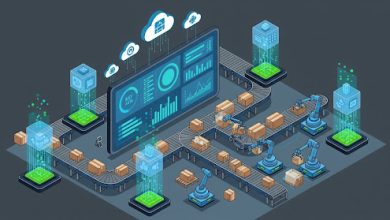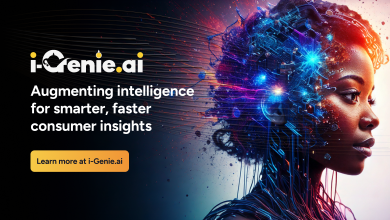
AI has become a key challenge and a tremendous opportunity for every organisation. It is reshaping software, transforming it from a mere tool into an active collaborator in workplaces and workflows. In this swiftly emerging AI economy, organisations are poised to fall into two distinct groups: those adept at AI and those struggling on the business front.
While experts widely agree that AI won’t replace humans anytime soon, the focus is on augmentation within a realm of mixed autonomy. Succeeding in this new paradigm demands innovative structures to harness AI’s transformative potential while effectively managing the associated risks. The key lies in establishing highly efficient methods of human-AI collaboration, a space where only a few organisations currently excel.
Despite bringing AI to the masses in 2023, numerous questions linger, impeding the pace of transformation. Extracting practical value from AI, finding cost-effective ways to operationalise it, and addressing data privacy concerns are among the critical challenges organisations face.
In this context, four predictions underscore the future of AI, rooted in the belief that data and processes are pivotal for organisational success in the AI economy.
Data foundations are critical
Numerous industry experts highlighted the imperative of establishing a robust foundational data architecture in this perspective. I wholeheartedly agree. Data forms the core of AI’s functionality. Consider a large language model – it rearranges the information it receives. The quality and quantity of data directly correlate with the accuracy of AI’s responses. To maximise AI’s effectiveness, you must provide it with substantial data.
However, organisational data often exists in disjointed pockets, hindering its utility and accessibility for AI models. This challenge is addressed by a data fabric, which offers a comprehensive, 360-degree perspective of enterprise data without necessitating migration from various sources. Organisations embracing a data fabric approach will find it easier to seamlessly integrate AI into their operations across the entire enterprise.
Harmonious collaboration between humans and AI
Contrary to the apocalyptic narrative depicting AI as a replacement for humans, reality presents a more nuanced view, both in the short and long term. AI lacks the autonomy to supplant human judgment and expertise.
These narratives draw parallels to the concerns software developers initially harbored with the rise of low code. Many feared it would eliminate developer jobs, yet it turned out to enhance the value of software developers, ensuring greater job security in the long run. Similar to low-code, AI has the potential to enhance human capabilities, increasing the value of employees and accelerating their contributions to business. Automation and AI are designed to complement, not overshadow, human roles.
AI operates as a collaboration partnership. While AI can generate content, humans are essential for editing. AI can propose decisions, but it is humans who ultimately make the choices. Work needs to be routed to AI, but this process also involves routing to other automation technologies and human interventions. Therefore, sophisticated workflow and process automation play a crucial role in transforming AI into a valuable, transformative technology that truly embodies the concept of the AI
enterprise. AI, while immensely helpful, is not a standalone act; it functions as an integral part of a larger, interactive team that augments human capabilities.
Businesses will need private AI
The widespread adoption of public AI models has captured widespread attention, but urgent concerns about data privacy have curtailed the initial enthusiasm. In early 2023, OpenAI temporarily banned ChatGPT in Italy due to potential privacy issues related to GDPR, marking a turning point. Various companies, spanning sectors from the public to banking giants like JPMorgan, have consequently restricted the use of public AI within their enterprises.
While the spotlight often focuses on such notable instances, privacy apprehensions extend beyond chatbots. Many major public cloud providers extend pre-packaged AI services to businesses of all sizes. Unfortunately, these providers frequently train their public AI algorithms using customers’ data, inadvertently contributing to the competition’s algorithmic training. Compounding the issue, transparency regarding data usage is lacking among several large-scale providers, exposing businesses to potential liabilities in case of data leaks.
While certain industries may tolerate these risks are warmly embrace AI, vigilance is crucial. Sectors such as the public domain, life sciences, and financial services cannot afford any compromise on privacy. Privacy breaches would have catastrophic consequences. Therefore, organisations must adopt a strategic and cautious approach, confining AI usage to areas where privacy can be more effectively assured or opting for vendors prioritising a private AI approach.
Regulations will soon catchup
If 2023 marks the significant rise of AI, anticipate 2024 as the pivotal year for AI regulation. Governments worldwide have acknowledged the potential adverse impacts that AI could impose on society, encompassing concerns such as privacy, misinformation, and cybersecurity risks. In 2023, the initial foundations for regulations began to take form in the US, the EU, and other regions.
While the political discourse has outlined general strategies for addressing these concerns, we should anticipate a surge in bills from the US Congress and actions and guidelines from various regulatory agencies. The EU has been actively deliberating its own AI Act to counter the potential misuse of this technology, though its status remains unsettled with existing opposition. The specific contours of these regulations are yet to be determined as lawmakers refine them. However, regulations will soon materialise, necessitating organisations to adapt accordingly.




